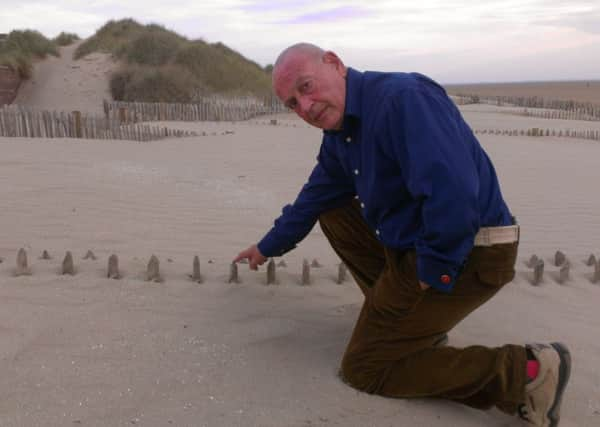Warning over beach danger


Since fencing was installed at the beach, the sand has covered up much of it, leaving just the tops sticking out.
And one resident has told how he fears it could result in serious injury.
Advertisement
Hide AdAdvertisement
Hide AdDr Brian Newman has passed his fears to Fylde Council, whICH installed the fencing under a £470,000 project funded by the Government’s Department for Food, Environment and Rural Affairs to improve the dunes.
Since his intervention, warning signs have been placed at the site, close to the North Beach car park and coastguard station at North Promenade car park and Coastguard station.
But Dr Newman, who works as a consultant surgeon, fears an unsuspecting youngster playing on the sand could be badly injured.
He said: “The posts are very sharp and in some places the windblown sand means only the very tops of them are visible and some have practically been covered already.
Advertisement
Hide AdAdvertisement
Hide Ad“Imagine a child running out of a vehicle straight from the car park going bounding on the sand and falling on one of those posts. It could produce a really serious injury.”
In 2009, Dr Newman was labelled ‘the dune raider’ in the national press after provoking an outcry by bulldozing through and sectioning off the dunes across from his North Promenade home.
His intention was to allow the dunes to reform naturally in a bid to prevent windblown sand and natural flora to grow.
Four years on, he feels his efforts have been a success and he has offered to work with Fylde Council on the natural preservation of the dunes along the stretch of beach popular with visitors as well as residents.
Advertisement
Hide AdAdvertisement
Hide AdBut he added: “Just last week, I was asked by a dog walker if I knew how she could contact an emergency vet. Her dog had injured itself on one of the posts.”
A Fylde Council spokesman confirmed Dr Newman had highlighted the situation to them and they followed up with signs asking beach users not to walk in the fenced-off areas, as dune restoration work was under way.
The council also says the posts are “a minor trip hazard.” A spokesman said: “The chestnut-pail fencing is a device to trap windblown sand to create new dunes and reduce the natural tendency of existing dunes to creep inland – a major cause of windblown sand in the area.
“They are working well. The sand is already building up around the fences so that, in places, the fence now only protrudes a matter of inches above the sand. That creates a minor trip hazard and we have erected warning signs.”
Follow us on twitter @The_Gazette and like our page on facebook to keep up with all the latest news.